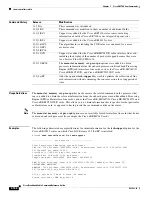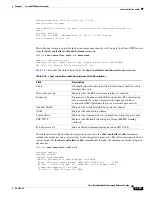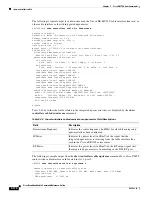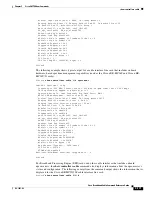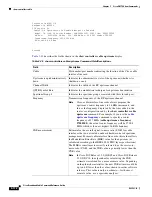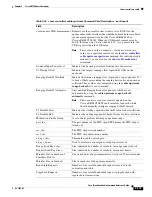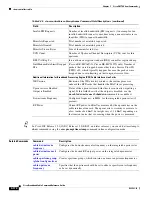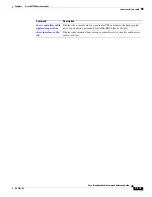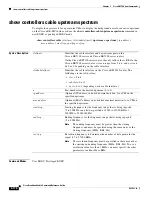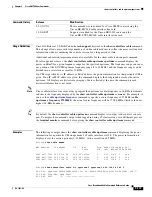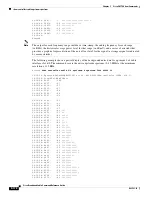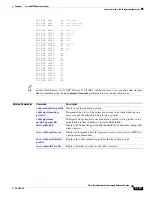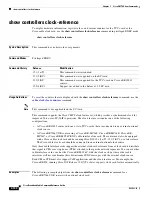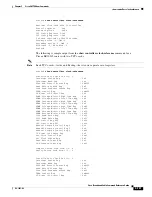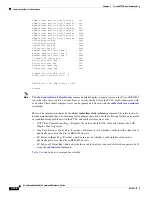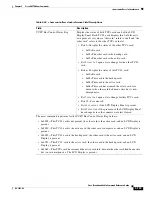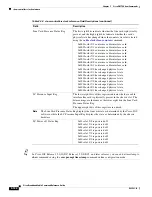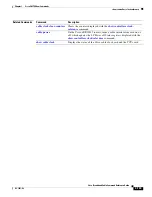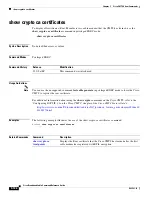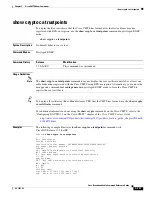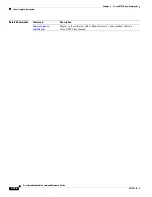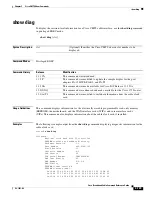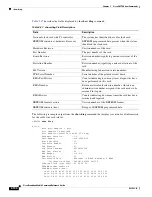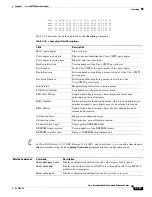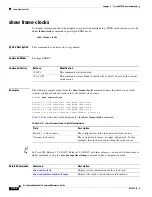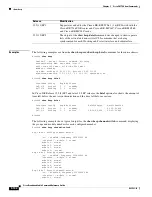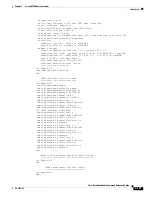
3-182
Cisco Broadband Cable Command Reference Guide
OL-1581-08
Chapter 3 Cisco CMTS Show Commands
show controllers clock-reference
PEMA Voltage Monitor High Time Reg : 0x0
PEMA Voltage Monitor Total Time Reg : 0x0
PEMA Current Monitor High Time Reg : 0x0
PEMA Current Monitor Total Time Reg : 0x0
PEMB Voltage Monitor High Time Reg : 0x66
PEMB Voltage Monitor Total Time Reg : 0xCD
PEMB Current Monitor High Time Reg : 0x1C
PEMB Current Monitor Total Time Reg : 0x34
LIU0 Read Write Reg : 0x30
LIU1 Read Write Reg : 0x11
LCD Control Reg RS0 : 0x66
LCD Control Reg RS1 : 0x20
General Purpose Control Reg 0 : 0x0
General Purpose Control Reg 1 : 0x1
General Purpose Control Reg 2 : 0x43
LC Power off Status Reg : 0x0
Sec Clock Control Reg : 0x80
Sec Clock Status Reg : 0x1
Push Button Input Reg : 0x0
LC Presence Input Reg : 0x21
Compare Errors rcvd from 2/1: 0
Parity Errors rcvd from 2/1 : 0
PEM A Power = 0w, PEM B Power = 343w
Router#
Note
The
show controllers clock-reference
command might display compare errors on the Cisco uBR10012
router because there could be a slight delay at system startup before the TCC+ cards synchronize with
each other. These initial compare errors can be ignored and cleared with the
cable clock clear-counters
command.
Most of the information shown by the
show controllers clock-reference
command is in the form of a
hexadecimal bitfield that is not meaningful for normal operations, but the following fields can be useful
in troubleshooting problems with the TCC+ and cable interface line cards:
•
UCPC Bus Control Status Reg—Displays the status of both TCC+ cards and whether the LCD
Display Panel is present.
•
Line Card Presence Status Reg—Provides a software view of whether a cable interface line card is
physically present in the Cisco uBR10012 chassis.
•
LC Presence Input Reg—Provides a hardware view of whether a cable interface line card is
physically present in the Cisco uBR10012 chassis.
•
LC Power off Status Reg—Indicates whether a cable interface line card slot has been powered off
using the
cable power
command.
Table 3-46
shows how to interpret these fields.

